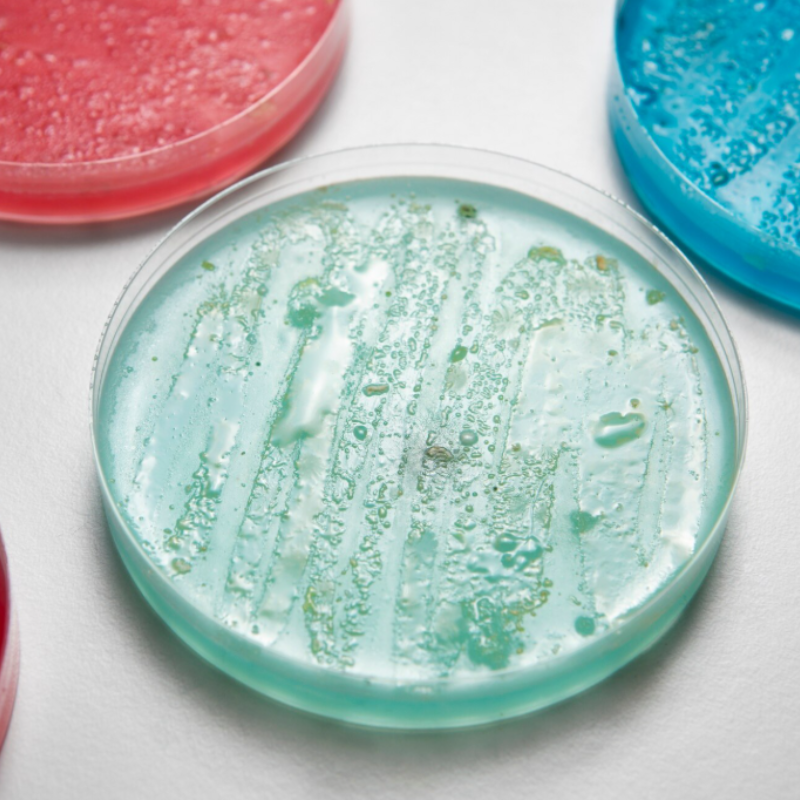As the body’s largest organ, the human skin serves a multitude of physiological functions, such as protection against environmental aggressors, thermoregulation, immune defense and even sensory perception.
Structurally, skin comprises three main layers: the epidermis, dermis, and hypodermis, each with distinct contributions to the skin’s mechanical performance. The dermis, rich in extracellular matrix (ECM) components like collagen and elastin, plays a particularly central role in mechanical resilience.
Biomechanical properties of the skin, meaning elasticity, tonicity, viscoelasticity, firmness, extensibility, and surface topography are key indicators of skin condition and are more and more used in dermatological research and cosmetics testing. These properties both intrinsic factors, such as age and genetics, and extrinsic influences, such as exposome, i.e pollution, UV exposure, humidity, and the application of personal care products. Skin aging and various diseases such as psoriasis affect skin mechanics. Therefore, studies of skin elasticity are potentially useful in assessing the efficacy of cosmetics products in terms of emollience and hydration. The mechanical properties of the skin are determined by the thickness and quality of the epidermis, dermis and subcutis. The epidermis, especially the stratum corneum, is a tight barrier against the external environment. It is tough and resilient due to the presence of fibrous keratin. The dermis layer is 1 mm thick and consists of a network of collagen with interspersed elastic fibers and lymphatic elements.
The influence of extrinsic and intrinsic factors on the skin’s biomechanical properties
The biomechanical properties of skin are constantly under the influence of intrinsic and extrinsic factors. Intrinsic factors include hormonal changes and ageing and contributes to the gradual decline of elastin and collagen production, fibroblast activity, ECM integrity. These factors result in diminished elasticity of the skin, as well as a loss of firmness. With advancing age, the skin’s capacity to rebound after deformation reduces due to collagen and elastin alteration.
At the same time, extrinsic factors, which include UV exposure, pollution, smoking, diet and even mechanical stress, also have an impact on the skin’s biomechanical properties. Among these, UV exposure and specifically UVA are the most significant contributor to premature skin ageing, which is referred to as photo ageing. Pollution and smoking exacerbate oxidate stress and inflammation, having a direct impact of skin barrier function and mechanical weakening. Mechanical stress from repetitive facial movements, such as smiling, frowning or raising your eyebrows, can promote wrinkles formation.
The development of skincare formulations tailored specifically for menopausal women reflects an increased awareness of their unique dermatological and physiological needs. The decline in estrogen levels induces significant skin changes, including reduced density and elasticity, increased dryness, slower cellular renewal, and diminished collagen and hyaluronic acid production. In response, the cosmetic industry is formulating targeted products designed to enhance hydration, mitigate inflammation, and counteract oxidative stress to reinforce the skin barrier. Furthermore, menopausal skincare is adopting a holistic approach that integrates topical treatments with nutraceuticals to promote overall well-being.
Structural basis of skin biomechanics
The mechanical behavior of skin is determined by its structural composition. The epidermis, although thin and avascular, provides barrier functionality. The dermis, comprising a dense ECM, is the main contributor to tensile strength and elasticity. The hypodermis, rich in adipose tissue, provides cushioning and mechanical support.
Central to the dermis is the extracellular matrix (ECM), a specialized network of fibrous and non-fibrous components. The ECM composed of hundreds of proteins is a dynamic network controlling the proliferation, adhesion, migration, polarity, differentiation, and apoptosis of the cells. The in-vitro or ex-vivo assays can target the various biological mechanisms providing limitless opportunities of claims support.
What methods exist today to in vivo assess the performance of skin care on biomechanical properties of the skin?
In cosmetic science, quantitative and visual analysis of skin mechanical properties is essential to evaluate the effects of lifting, anti-aging, anti-sagging topical applications and injectable treatments. The development of non-invasive techniques, such as suction-based deformation analysis and optical imaging, has significantly enhanced the ability to study skin mechanics in-vivo.
The implementation of efficacy studies refers to the regulations in each area of the world and sometimes in each country. In Europe, the reference is the European regulations for cosmetics (CE. N 655/2013 Art.20 -Art.22) with mainly the Product Information File (P.I.F). To support product claims, cosmeticians must in Europe meet the 6 common criteria: Compliance with Legislation, Truth, Adequate and Verifiable Evidence, Sincerity, Fairness, and Informed Choice. There are no specific standards for each test (except for sensory analysis and sun protection factor cf. ISO) and cosmetics may follow guidelines for human testing such as EEMCO, Good Clinical Practice…
These scientific processes of objectification protect the consumer against misleading claims and preserve the credibility of the cosmetics industry. Test managers can choose to validate the performance of their active ingredients or finished products on humans from 4 categories:
- Consumer tests: These studies are carried out by a naïve panel under the normal conditions of use of the product. The consumer’s feeling about the effectiveness of the product is collected through a self-assessment using a custom-designed questionnaire.
- Sensory or emotional analysis: These tests are carried out by qualified experts or naïve panels, in real conditions or online, to object to the activities of the product perceived by the subjects.
- Clinical scores: this is a scientific approach to the evaluation of the effectiveness of the product by trained experts using specific scales and descriptors. The scorage by experts using specific visual and tactile scales are complementary analysis that can be also completed by auto-evaluation of the volunteers or specific consumer studies.
- Biometrological tests: This is the objectification of performance by measuring the physico-chemical characteristics of the skin, hair or nails using measuring devices. They make it possible to visualize or quantify the different activities of the products on the skin, hair or nail mechanisms.
The skin’s mechanical characteristics are diverse and interdependent, reflecting the complex interplay between its 3 layers, and its cellular and extracellular components. These properties are dynamic and respond to both physiological states and external stimuli, making them essential metrics in cosmetic testing.
Elasticity reflects the skin’s ability to return to its original shape after mechanical stress, primarily governed by the quality and organization of elastin fibers. Viscoelasticity denotes the time-dependent recovery behavior, influenced by the ECM’s hydration level and composition. Firmness and stiffness describe the skin’s resistance to deformation and correlate strongly with collagen content and dermal density. Extensibility measures the capacity of the skin to stretch, critical in maintaining functionality during movements and in contexts such as wound healing.
Some definition of the parameters studied:
- Elasticity: The skin’s ability to return to its original shape after deformation.
- Firmness: This is the skin’s ability to resist deformation under the effect of an external force. It reflects the stiffness and elasticity of the skin. Firm skin retains its shape and structure under applied force and quickly returns to its original state.
- Stiffness: This is the resistance of the skin to deformation under an applied force.
- Viscoelasticity: A property of the skin that combines both viscous and elastic characteristics, influencing the way it deforms and recovers over time.
Collectively, these properties not only define the skin’s mechanical behavior but also serve as biomarkers for aging and treatment efficacy in dermatological and personal care applications.
Beyond the consumer tests and the scorage by experts we have categorized the assessment of the biomechanical properties of the skin in 2 parts: one dedicated to direct measurements and the second one dedicated to indirect evaluation.
The direct measures of the mechanical properties of the skin
A real-time deformation using several techniques –ballistometry, suction (with or without imaging), indentation, or air flow- is implemented one or several times on the skin surface. The techniques used make it possible to evaluate the mechanical response of the skin to an applied force. Then, the biomechanical behavior induced is measured through optical or fringe projection principle.
Reminder of the different direct measurement methods:
- Ballistometry: The method is based on the impact of an object at constant force, then evaluate firmness and dynamic resilience according to the degree of rebound.
- Suction: A depression is caused on the surface of the skin by vaccuum. Aspirated, the skin is stretched vertically by suction. By releasing the suction, the skin returns to its original position. The degree of deformation is measured by the sensors as well as the speed and extent of the return to normal after the deformation.
- Indentation: A controlled force is applied locally to the surface of the skin using an instrument with a tip of a specific shape and size. The measurement considers the applied force and penetration depth and evaluates the elasticity, stiffness, viscoelasticity. Probes with 3 different pin Ø (2, 3 and 5 mm Ø) for various skin sites. The smaller the diameter, the deeper the pin goes into the skin. Special shaped probe for the measurement of the scalp (pin 1 mm Ø).
- Air Flow without contact: A calibrated air jet perpendicular to the skin surface produces local deformation and induces the skin depression. Measurement takes place in three consecutive acquisitions. The area of interest before deformation, during deformation after deformation. Measurement is performed using a 3D fringe projection sensor.
- Light Impulse: An air flow is applied onto the surface of the skin which generates the propagation of Rayleigh waves. The speed of the propagation of the waves is measured in 7 directions.
The indirect measures of the mechanical properties of the skin
Indirect measurements, analyze the assessment of parameters that are linked to the biomechanical properties of the skin and give information on: Collagen, Face analysis and volume, molecular composition, proteomics and metagenomics, dermis size and shape, Skin aspect and structure. On the clinical testing platform, you can find several methods of analysis and laboratories providing these methods by connecting for free.
The preliminary discussion with the CROs to design the protocols parameters (timeline, duration, conditions of use of the products, inclusion criteria, instrumentation choice …), seems to be essential to define the best protocol to support the claim substantiation.
The evolution of technology in the no contact probe, the data acquisition and treatment with the use of I.A algorithm may give the direction of non-contact and optical solutions.
In the highly competitive cosmetics industry, the quantification of skin biomechanical properties has become a critical tool not only for product development but also for substantiating marketing claims. Consumers increasingly demand evidence-based efficacy, driving brands to leverage biomechanical data, such as improvements in elasticity, firmness, and wrinkle reduction as measurable outcomes. Advanced skin testing technologies provide objective, reproducible metrics that support product differentiation and regulatory compliance.
By demonstrating scientifically validated effects on skin mechanics, companies enhance consumer trust and brand credibility. Moreover, these biomechanical markers help tailor personalized skincare solutions, aligning with trends toward individualized beauty regimens. Thus, integrating biomechanical assessments into cosmetic marketing strategies enables a compelling narrative rooted in science, reinforcing product value and driving consumer engagement.
Contact
Anne Charpentier
CEO & Founder
www.skinobs.com
Sources:
- Elastic properties of human skin: relation to age, sex, and anatomical region, Arch. Cua A., Wilhelm K.-P., Maibach H., Dermatol. Res. 282(5), 283–288 (1990).
- In vivo measurement of the biomechanical properties of human skin with motion-corrected Brillouin microscop, Maria N Romodina, Asha Parmar, Kanwarpal Singh, Biomed Opt Express, . 2024 Feb 20;15(3):1777–1784.
- Fthenakis CG, Maes DH, Smith WP (1991) In vivo assessment of skin elasticity using ballistometry. J Soc Cosmet Chem 42:211–222
- Measurement of the mechanical properties of skin with ballistometer and suction cup, Gregor B. E. Jemec, Edgar Selvaag, Magnus Ågren, Hans Christian Wulf





